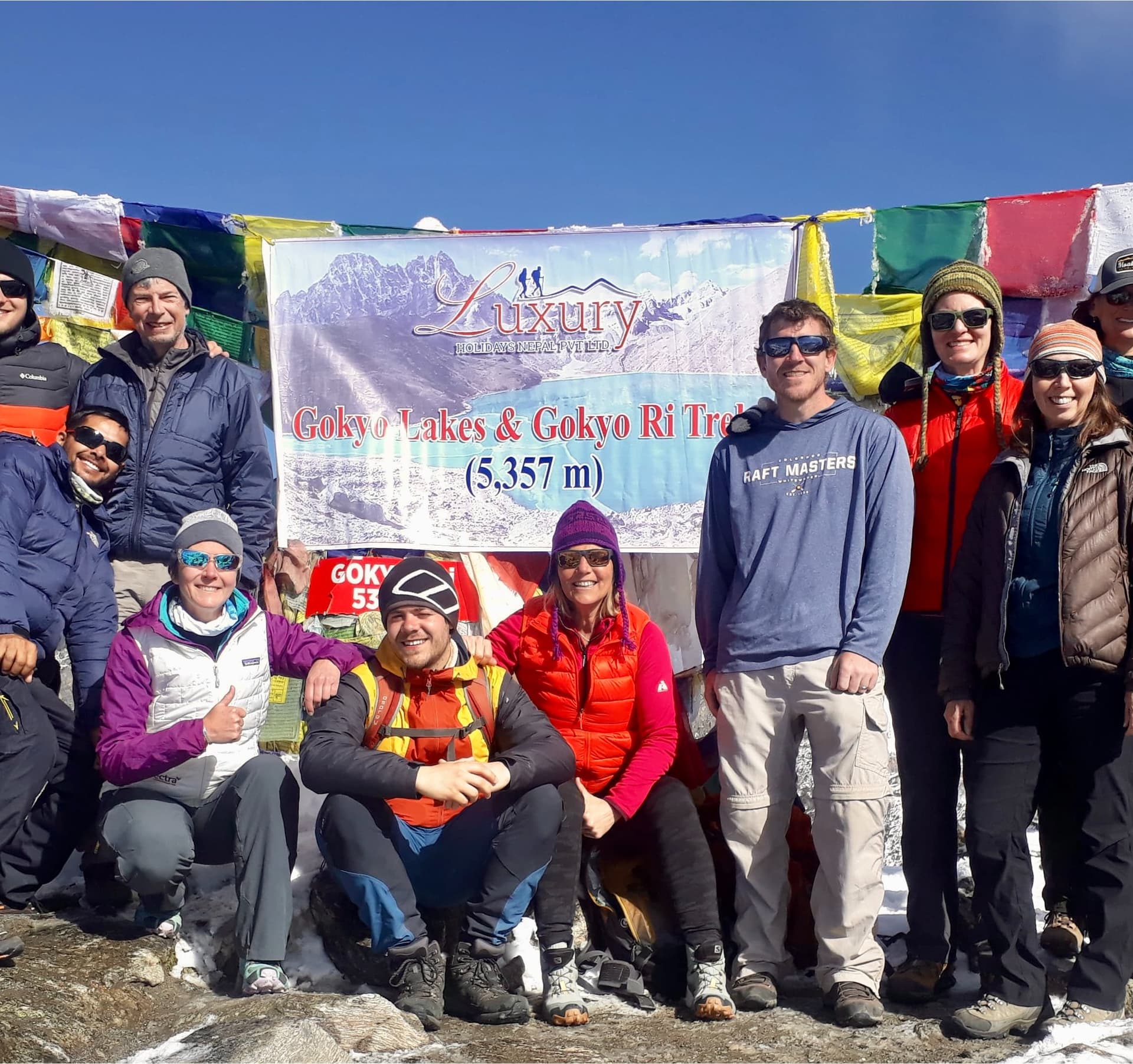Embark on a once-in-a-lifetime journey with Luxury Holidays Nepal's 9-Day Everest Base Camp Helicopter Trek. This exclusive adventure combines the exhilaration of trekking through the stunning Himalayan landscapes with the luxury and convenience of helicopter access to Everest Base Camp and Kala Patthar. Starting with an exploration of Kathmandu's rich heritage, you’ll fly into the heart of the Khumbu region, trekking through Sherpa villages, experiencing local culture, and acclimatizing at scenic stops like Namche Bazaar. The journey culminates in a breathtaking helicopter flight over Everest Base Camp, offering unparalleled views of the world’s tallest peaks. Perfect for adventurers seeking both challenge and comfort, this trek is an extraordinary way to experience Everest.
(For Group rates and discounts please contact us at - Direct Call: +977-9851005129 (Nepal) and +1 916 794 8443 (USA) / Whatsapp: +977-9851005129 )
Highlights of the Everest Base Camp Helicopter Trek: 9-Day Adventure
- Guided Sightseeing in Kathmandu Valley: Start with a cultural exploration of Kathmandu’s UNESCO World Heritage Sites, a perfect introduction to Nepal's history, art, and spirituality.
- Thrilling Flight to Lukla: Kick off the trek with an exhilarating flight to Lukla, one of the world’s most scenic air routes, offering incredible views of the Himalayan range.
- Trekking Through Authentic Sherpa Villages: Walk through Sherpa villages like Phakding and Namche Bazaar, experiencing their vibrant culture and warm hospitality.
- Acclimatization Day in Namche Bazaar: Adjust to the altitude in Namche Bazaar, where you can visit local markets, enjoy breathtaking views, and explore Sherpa museums and cafes.
- Peaceful Hike to Thame: Discover the tranquil village of Thame, known for its ancient monasteries and peaceful mountain views, a detour away from the busier trekking paths.
- Aerial Flight Over Everest Base Camp and Kala Patthar: Enjoy a scenic helicopter flight over Everest Base Camp and Kala Patthar, providing unparalleled aerial views of the Khumbu Glacier and Mount Everest.
- Panoramic Himalayan Views: Take in breathtaking vistas of the Himalayas throughout the trek and from the helicopter, capturing the magnificence of the world’s tallest peaks.
- Comfortable Standard Lodge Stays: Stay in comfortable standard lodges along the trek, with the option to upgrade to luxury lodges for added comfort.
- Nepali Farewell Dinner in Kathmandu: Celebrate the end of your adventure with a traditional Nepali dinner, complete with cultural performances, marking a memorable finale.
- Helicopter Return to Lukla and Flight to Kathmandu: Complete the journey with a scenic helicopter ride back from Everest Base Camp to Lukla, followed by a comfortable flight to Kathmandu.
Route Overview
The Everest Base Camp Helicopter Trek: 9-Day Adventure by Luxury Holidays Nepal takes you on a breathtaking journey through Nepal's most iconic landscapes, combining trekking with the thrill of a helicopter flight. Starting in Kathmandu, you'll explore cultural landmarks before flying to Lukla, the gateway to the Everest region. From here, the route leads through lush valleys and traditional Sherpa villages, with stops at Phakding, Namche Bazaar, and the remote village of Thame. After acclimatizing in Namche, you'll take a scenic helicopter flight over Everest Base Camp and Kala Patthar, capturing aerial views of Everest and the Khumbu Glacier. The adventure concludes with a helicopter return to Lukla and a final flight back to Kathmandu, blending cultural immersion, high-altitude trekking, and luxurious convenience into an unforgettable Himalayan experience.
Trip Alternative Options
- Classic Everest Base Camp Trek (15 Days): A traditional trekking route from Lukla to Everest Base Camp, providing a full trekking experience with no helicopter flights. Ideal for trekkers looking for a more immersive journey.
- Everest Base Camp Luxury Lodge Trek (14 Days): Combines the classic trek with luxury lodge accommodations along the route, offering enhanced comfort in select lodges with fine dining and upgraded amenities.
- Everest Base Camp Helicopter Tour (1 Day): A quick, scenic helicopter tour from Kathmandu to Everest Base Camp and Kala Patthar, allowing you to experience Everest’s iconic views in a single day, with minimal trekking.
- Gokyo Lakes and Everest Base Camp Trek: A more challenging trek that combines the Everest Base Camp route with a detour to the stunning Gokyo Lakes and Gokyo Ri for unique perspectives of Everest and surrounding peaks.
- Everest Base Camp & Island Peak Climb: This trek includes an ascent of Island Peak (6,189 m) after reaching Everest Base Camp, providing an additional climbing adventure for those looking to experience both trekking and mountaineering.
- Everest Three Passes Trek: A challenging trek that covers three high passes—Kongma La, Cho La, and Renjo La—offering more remote trails, spectacular mountain views, and access to Everest Base Camp.
If you need any further information, please contact us by email: at [email protected], Phone: at +977- 985 100 5129 (WhatsApp)



























